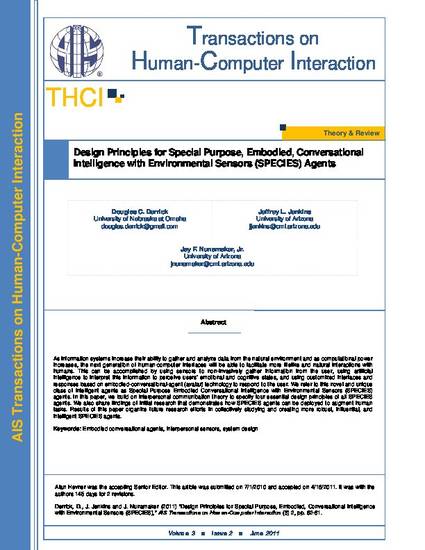
As information systems increase their ability to gather and analyze data from the natural environment and as computational power increases, the next generation of human-computer interfaces will be able to facilitate more lifelike and natural interactions with humans. This can be accomplished by using sensors to non-invasively gather information from the user, using artificial intelligence to interpret this information to perceive users’ emotional and cognitive states, and using customized interfaces and responses based on embodied-conversational-agent (avatar) technology to respond to the user. We refer to this novel and unique class of intelligent agents as Special Purpose Embodied Conversational Intelligence with Environmental Sensors (SPECIES) agents. In this paper, we build on interpersonal communication theory to specify four essential design principles of all SPECIES agents. We also share findings of initial research that demonstrates how SPECIES agents can be deployed to augment human tasks. Results of this paper organize future research efforts in collectively studying and creating more robust, influential, and intelligent SPECIES agents.
Available at: http://works.bepress.com/douglas_derrick/1/
